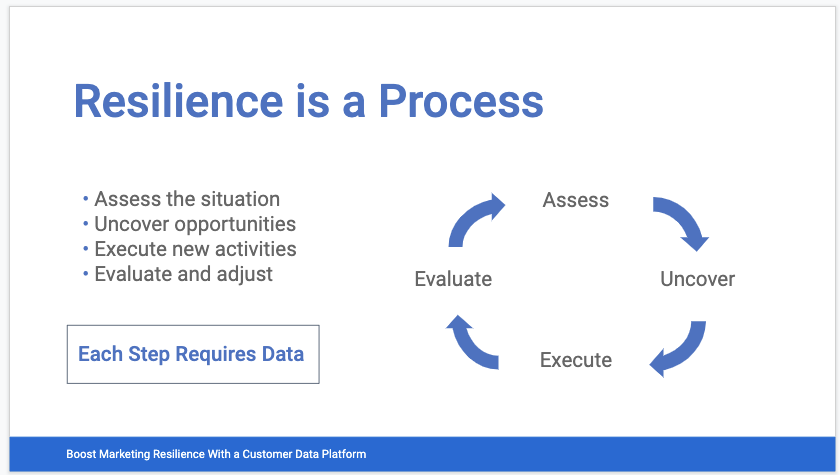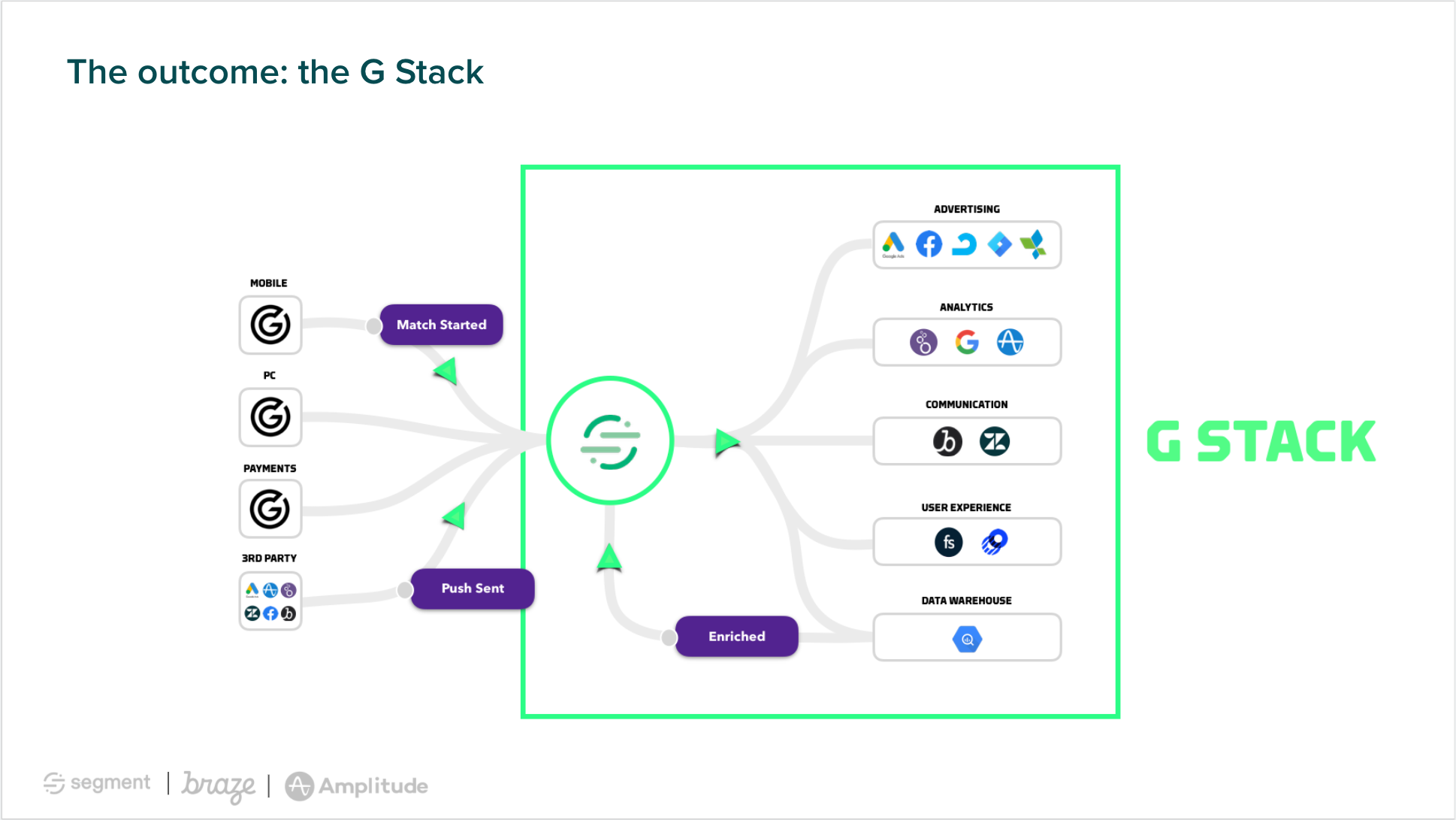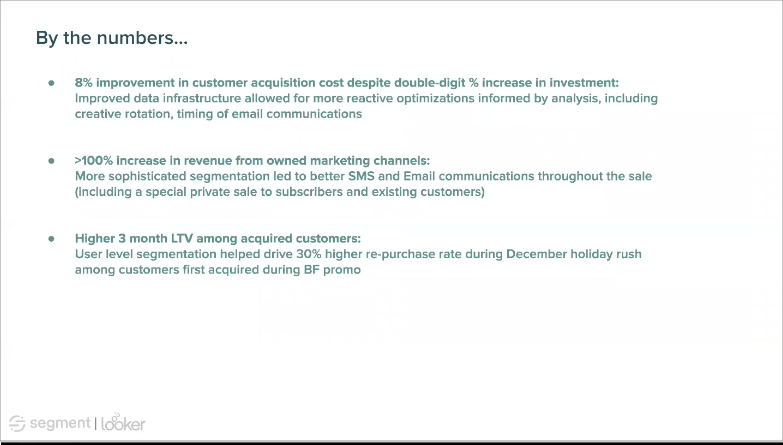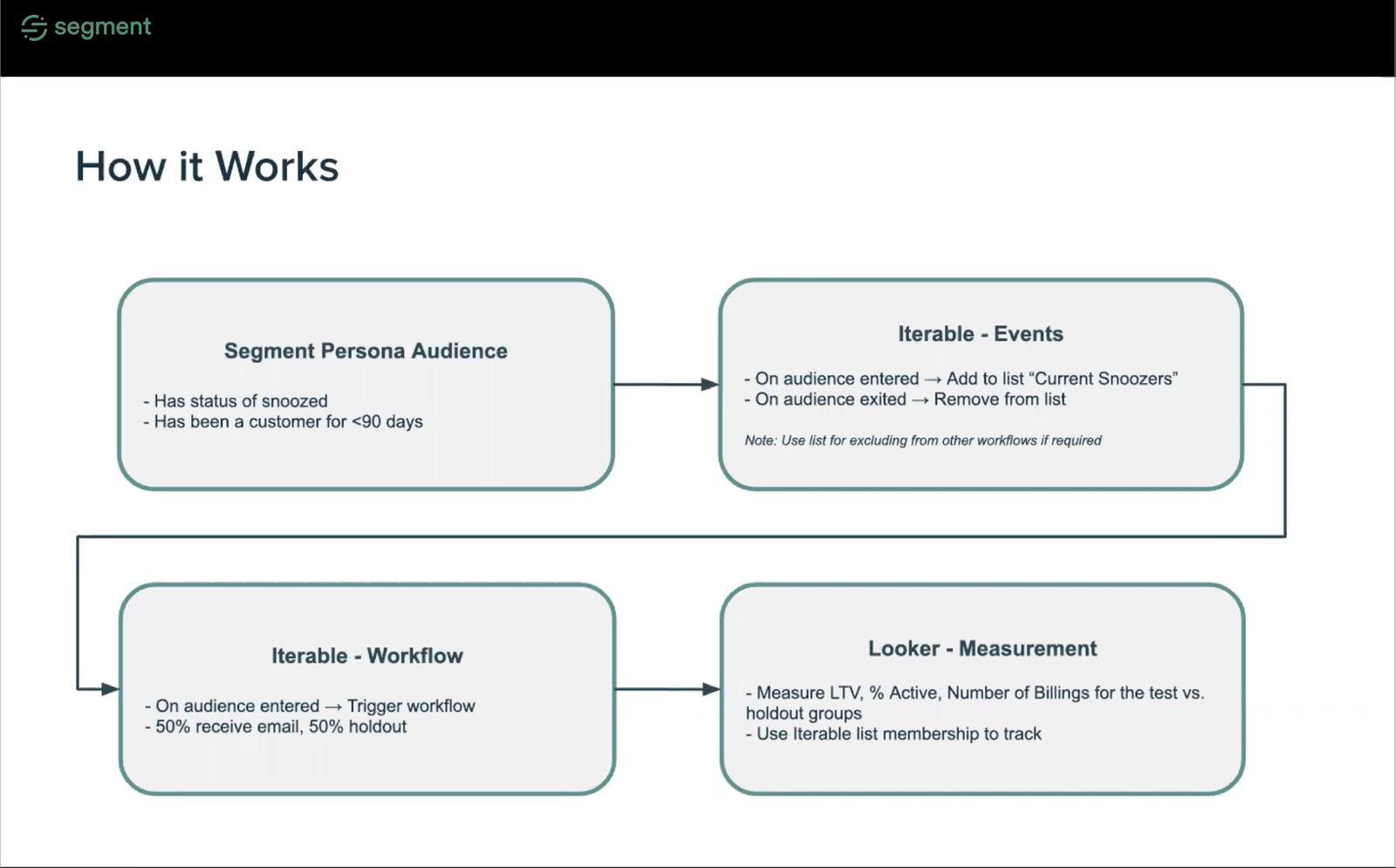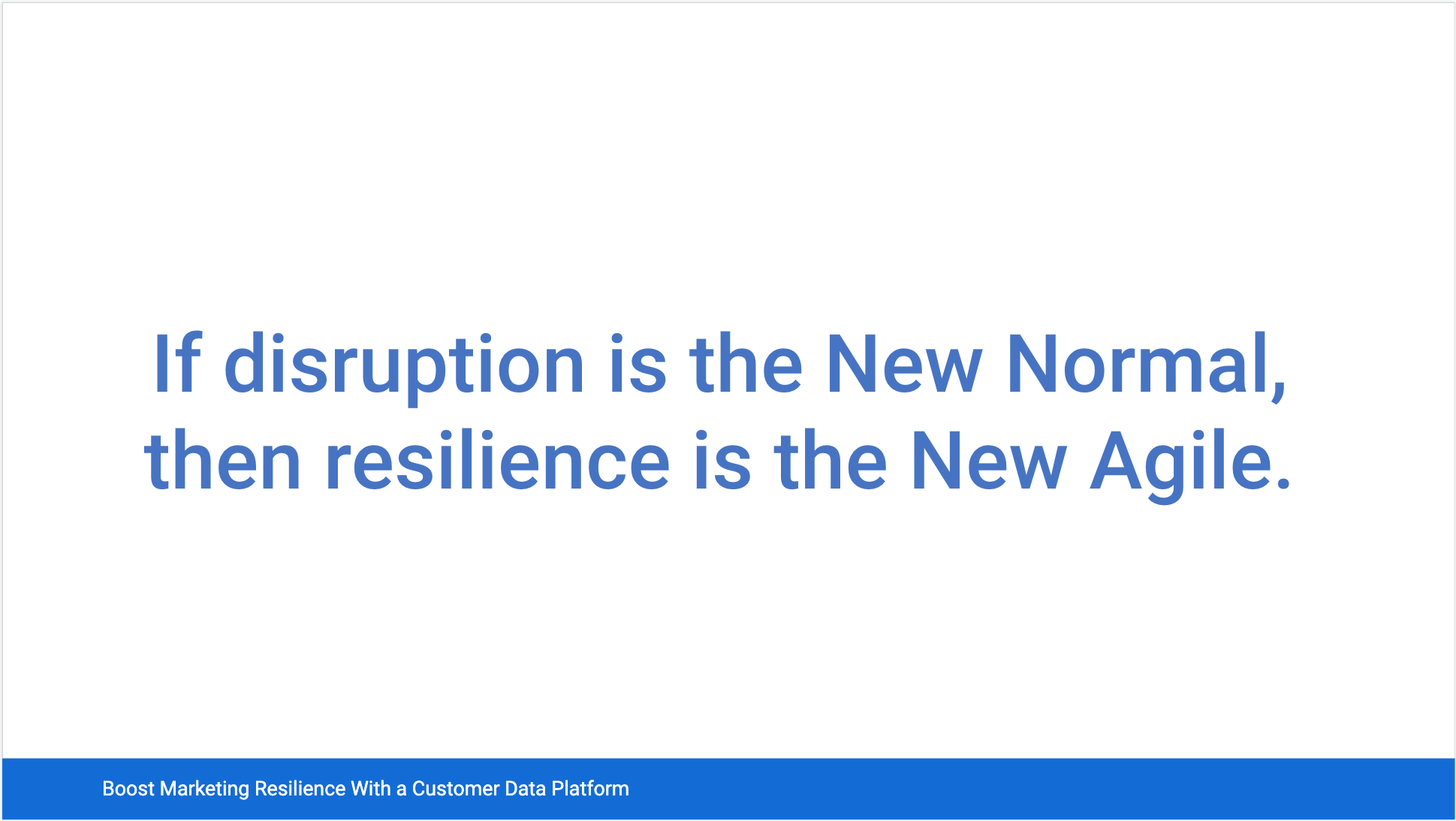View Jaime's session to see more how insights and data-driven actions drove teams forward at G-Loot. Resilient stacks like G-Loot's and Staples Canada's highlight this first truth, assessing the situation by providing real-time customer engagement and performance results from across channels.
Uncover opportunities
Deciding what opportunities you pursue requires tradeoffs between short-term and long-term benefits. You need to consider customer needs and go-to-market capabilities. Opportunity analysis can help determine the potential results of pivoting to make something new like face masks and improving an existing product line. When a shift in the market changes your customer’s needs, you have two approaches:
-
Offensive: Acknowledge the market change and focus on acquisition by tackling new markets or targeting new customers
-
Defensive: Double down on existing customers and focus on retention
Both approaches demand a significant understanding of your customer data. Building a resilient stack relies on CDP capabilities to prep and analyze data in near real-time to support your pursuit of new opportunities, especially when you take on both approaches.
Under Armour uncovers retention opportunities using app experimentation
At STACKED Austin, Katie Carpenter, Sr. Manager, Run & Fitness Product at Under Armour focused her session on uncovering retention focused opportunities to reduce churn.
We started with a simple question that doesn't always have a simple answer. How can we improve retention? To begin answering that question, we surveyed our users and discovered that the number one reason that our athletes stop using our app is due to injury.
The core of her uncovered retention issue resided outside of the app. Working off of real-time, unified app data and athlete data, the product team and exercise scientists designed programs and experiments to keep users engaged with the app throughout that real pain point, injuries.
The data's there. It's clearcut, it's at our fingertips, and it enables every member of our team to conduct their own analysis and ask and answer their own questions. We now feel empowered to make informed decisions about what the next step should be. When you empower one team, you free up another, which is a great problem to have. That meant that product analytics had a lot more time on their hands to think bigger thoughts, and we love that.
Katie's talk details how the user engagement data from MapMyRun and MyFitnessPal flows into Segment, enabling automated audience flows and integration with their CRM. Watch the full session to hear more how Under Armour retention focused experiments and tactics benefit when automated audience flows set up in a single day versus weeks.
Execute new activities
Without good data, poor execution leads to bad customer experiences, brand embarrassment, and lost revenues. Determining what to do first depends on reliable data supporting your expected results. For marketers, “do” looks like designing the right content, buying the right media spots, or improving product descriptions. Then, you have to ensure teams and tools can track results.
Especially in remote work environments, marketers need to build out new customer segments and engage existing ones without engineering or analytics support. With a CDP, marketers get to focus on understanding their customer base, building new customer segments, and running experiments, rather than waiting around for access to data.
Mejuri improves customer acquisition cost by 8% while decreasing investment
Peter Cheung, Director of Performance Marketing & Analytics at Mejuri, presented at STACKED Toronto. As a digitally native brand focused on fine jewelry, Peter shared how a savvy marketing dashboard supported new activities for online and in-store marketing.
Since implementing Segment, we're able to build this live, real time dashboard that gave us a sense of what our revenue tracking was at the time, at any given point in the day, and whether there were new or new or returning customers. It gave us a sense of how we were balancing our investment across existing remarketing efforts. It told us which products we're moving and how they were bundled with other products. This allowed us to optimize our ad creative, in real time, to feature certain products over others.
For successful marketing efficiency execution, people and process requirements include collaboration, self-service, and reuse across teams. For Mejuri, these include marketers and adjacent teams like product and analytics.
Importantly, it gave us a sense of what our customer acquisition costs were in the moment so that we can manage our unit economics. We can make sure that we are not over marketing, and that's where we had room to grow from our actual customer acquisition costs to what our target was. If we were below that target, then we could invest even more and try to push for additional growth.
